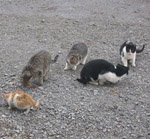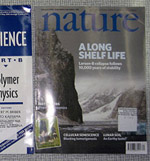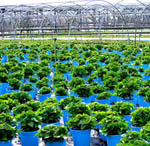Teaching an endangered predator to avoid toxic prey
 Northern quoll (Dasyurus hallucatus) in Queensland. Credit, Wildlife Explorer.What do you do when a critically endangered predator like the northern quoll has developed a taste for the highly toxic cane toad?
Northern quoll (Dasyurus hallucatus) in Queensland. Credit, Wildlife Explorer.What do you do when a critically endangered predator like the northern quoll has developed a taste for the highly toxic cane toad?
Aversive conditioning to modify the quoll's appetite for toads could be the answer according to a new study by Stephanie O'Donnell and fellow researchers from the University of Sydney.
This study has already received a fair bit of media attention but I think it merits being profiled here for those who may have missed it.
Native to Latin America, cane toads were first introduced to Australia in 1937 and have since spread across much of Australia causing the decline of numerous mammals that feed on the toxic invaders.
The northern quoll has fared particularly badly and faces potential extinction as the exotic toad spreads across its range causing local population crashes.
The problem is likely due to the fact that quolls evolved without ever having been exposed to the toxic chemicals in the cane toad.
To help stave off extinction, the researchers conducted an experiment in which they exposed a group of northern quolls to a native toad laced with thiabendazole - a nausea-inducing chemical.
 The cane toad (Bufo marinus) with large parotoid glands where it stores its bufotoxin visible behind the eyes. Credit, Eli Greenbaum.They then outfitted the "educated" quolls with radio collars and released them back into cane toad country along with a control group of "uneducated" quolls.
The cane toad (Bufo marinus) with large parotoid glands where it stores its bufotoxin visible behind the eyes. Credit, Eli Greenbaum.They then outfitted the "educated" quolls with radio collars and released them back into cane toad country along with a control group of "uneducated" quolls.
The study found that the quols exposed to the treatment were less likely to die from eating cane toads and had a greater overall short-term survival than the control group.
More research is needed to confirm that the conditioned taste aversion works over the long term.
Furthermore, the approach was not entirely successful - some "educated" quolls still feasted on cane toads - though higher dose rates of thiabendazole might improve the behavior conditioning.
Nevertheless the results are promising and could bode well for the persistence of the northern quoll as well as other native predators threatened by the invasive cane toad.
The study authors advise that "wildlife agencies could aerially deploy ‘toad baits’ ahead of the cane toad invasion front, to educate quolls to avoid attacking cane toads before the toads invade"
If so, they should probably act quickly. The cane toad has already spread into 60% of the northern quoll's range and will likely invade the remaining areas within two decades, scientists warn.
--by Rob Goldstein
O’Donnell, S., Webb, J., & Shine, R. (2010). Conditioned taste aversion enhances the survival of an endangered predator imperilled by a toxic invader Journal of Applied Ecology DOI: 10.1111/j.1365-2664.2010.01802.x




 Herps
Herps
Reader Comments